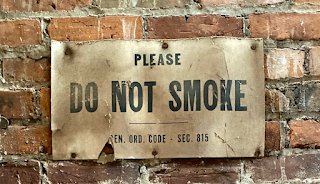The main issue for me is that we are dealing with public health — that is, groups of people, rather than individuals. The claim is that wine is unhealthy for people as a whole. By contrast, one of the medical centers that I occasionally deal with, has as part of its stated Vision: we improve public health — one individual at a time (Swedish: förbättrar vi folkhälsan — en individ i taget). The current official medical pressure seems to be the opposite approach, for alcohol in general (WHO shifts its alcohol narratives, and the wine industry faces new challenges).
Put simply, human health is a standard cost-benefit analysis. That is, for any given situation we explicitly lay out both the benefits and the costs, for everyone to be able to see and evaluate. We then compare those costs and benefits, to see how they balance each other. If the costs out-weigh the benefits then we would be best to change the situation; and if it is the other way around then we might leave things as they are. (As a practical example, see: Ag groups cheer court’s defense in science-based regulation of chlorpyrifos.)
Here is a simple cost-benefit analysis of the personal consumption of wine and tobacco.
|
Health |
Benefits |
Costs |
|
Smoking tobacco |
• few, except stress relief |
• lung cancer causing mortality • costs for people within breathing distance |
|
Drinking wine |
• J-curve of personal health: low consumption reduces risks • social interactions (since we don't drink alone) |
• J-curve of personal health: high consumption increases risks • social costs of drunkenness and alcoholism |
There seems to be very little basis here for directly comparing smoking and drinking in terms of health costs and benefits. Mind you, George F. Koob (director of the US National Institute on Alcohol Abuse and Alcoholism) has suggested that: “recent research finds the health risks of alcohol outweigh any benefits.” For example, one reason for the J-curve is that alcohol seems to be protective against cardiovascular disease, while at the same time increasing the risk of death by other means, such as cancers and accidents (WHO lobbies EU lawmakers against watering down alcohol cancer risk).
Nevertheless, smoking was banned in public because of a direct effect on humans even at low levels, and also on people nearby the smoker (chewing tobacco was excepted); * no such effect is know for low levels of alcohol consumption. Furthermore, given the social nature of wine drinking, the idea that banning it would have a good cost-benefit analysis is unlikely.
This has not stopped an increasing level of discussion, both ways (summarized in: Is alcohol the new tobacco?). Indeed, there have even been suggestions that the anti-alcohol lobby is taking us back in time (How much of a threat is the New Prohibitionist Movement?). These discussions are definitely worth reading. One outcome of interest is that a move towards healthier lifestyles by younger people is reducing alcohol consumption (Is Generation Z drinking less?), although apparently not in India (How do you tackle the Indian beverage alcohol market?).
Even wine label warnings should not be as dire as those for smoking. Nevertheless, some sort of label warning is probably inevitable for all alcoholic drinks, so wine-makers may need to get used to it (Concern among winemakers about potential new requirements for alcohol health warnings on bottles), just as they are now doing for other label requirements (New EU regulations for wine ingredients and nutritional labeling come into effect December 8). There are, however, potential health-warning issues for all of us (6 ways the new public health anti-alcohol warnings may affect consumers).
Associating wine and tobacco has a long history, even in the medical profession. We might, for example, remember When cigarette companies used doctors to push smoking. Even the Bollywood movies of India [Hindi cinema, based in Mumbai] associated the two: “a woman drinking wine [in Bollywood movies] was usually a vamp with a glass in one hand and a cigarette in the other, up to devious things.” So, I will end this post with two apt quotes.
First, we have George Bernard Shaw:
“A cigarette is a pinch of tobacco rolled in paper, with fire at one end and a fool at the other.”Second, we have Robert Mondavi:
“We believe wine is the temperate, civilized, sacred, romantic mealtime beverage recommended in the Bible. It is a liquid food that has been part of civilization for 8,000 years. Wine has been praised for centuries by statesmen, scholars, poets, and philosophers. It has been used as a religious sacrament, as the primary beverage of choice for food, and as a source of pleasure and diversion. Wine is the natural beverage for every celebration: the birth of a child, graduations, engagements, weddings, anniversaries, promotions, family gatherings, toasts between governments, and other festivities.”
* Note that vaping is an improvement, but people like me can still smell the tobacco.













